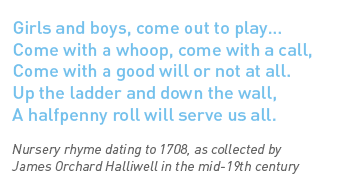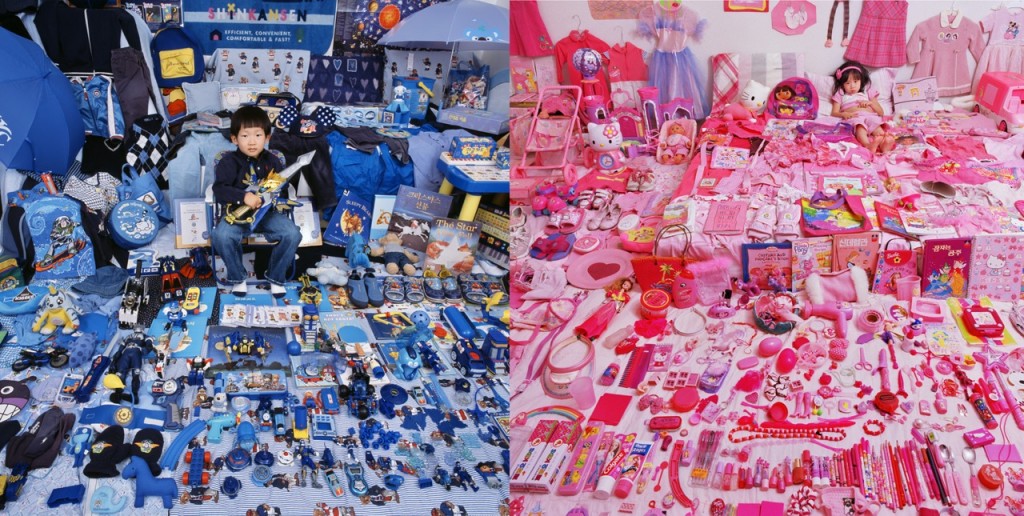 The poets of the early eighteenth century saw it as clearly as we do: “slugs, snails and puppy dog tails” delight all kids equally. But on International Womens’ Day 300 years later, despite all our advancements, “sugar and spice and everything nice” persists as our overwhelming message to girls—and the cumulative effect is anything but advanced.
The poets of the early eighteenth century saw it as clearly as we do: “slugs, snails and puppy dog tails” delight all kids equally. But on International Womens’ Day 300 years later, despite all our advancements, “sugar and spice and everything nice” persists as our overwhelming message to girls—and the cumulative effect is anything but advanced.
From toddlerhood, girls are inundated by messages that “princesses” are either not cut out for math and science or not welcome in it. A report by the U.S. Department of Education pinpoints eighth grade as the critical point of divergence, when girls veer away from subjects that would propel them into everything from astronomy to architecture. Apparel retailer The Children’s Place produced girls’ t-shirts emblazoned with My Best Subjects, with a list that featured checkmarks for shopping, music and dancing. Math was listed, but not checked. The punchline? “Nobody’s Perfect.”

After much ado online, The Children’s Place eventually pulled the shirts and apologized, as did JC Penny after the outcry over its sweatshirt that read I’m too pretty to do my homework so my brother has to do it for me. “The fact that these shirts even made it past the concept stage speaks volumes about the gross disparity that still exists between how we speak with boys and girls about their abilities and career opportunities in the STEM disciplines,” says Cheryl Schrader, Chancellor of the Missouri University of Science and Technology.
The good news is that the imbalances and negative messages that add up to girls abandoning STEM are low-hanging fruit. Jane Huston speaks to gender equality in STEM fields in a recent Disease Daily piece: “There are a lot of people thinking, writing and working to mitigate the problem. I don’t know how we correct these biases, but raising awareness of the problem, especially on this 102nd International Women’s Day, feels like a good piece of the solution.”
Although the pervasiveness of negative bias makes it seem like an overwhelming problem, our contribution as adults who work in media and entertainment is overwhelmingly simple. It’s easy to meet kids where they are—in the movies, TV shows, and digital games they already inhabit—and put alternatives to “sugar and spice” in their frame of view. It just requires a creative pause.
As game designers who create stories and immersive worlds for play, it is just as easy to move beyond tired tropes of damsels in distress and little soldiers as it is to perpetuate the status quo. We can offer the superheroism, exploration, critical thinking and self-sufficiency that makes all kids think, “Yeah! Cool. I can do that.”
In Wired Magazine, longtime gamer Laura Hudson speaks to the immersive power of videogames as a gateway to possibility: “…Cloaked in her genderless robotic exoskeleton, she could be defined by what she did, rather than what she looked like. Like Samus wearing the robot suit, I found that videogames allowed me to become a person who did things—but usually only if I was willing to shed my gender. It’s the price of admission, the coin you pay to cross the river.”
It’s not that video games, as one of the most popular entertainments of children today, should be genderless. Quite the opposite. 45% of the billions of people who play video games are female. By presenting female and male characters in equal proportions—endowed with equal strengths and equal challenges—games can engage 100% of players. A plethora of academic foundations and social movements echo this demand—parents want more than lip gloss and pink ruffles for their daughters, and more than one-dimensional, aggressive machismo for their sons. The rallying cry that’s an interesting parallel for both: If she can see it, she can be it. Why not model truly imaginative, inclusive, and wild adventure for all? The opportunity for gaming to respond is huge.

Western governments link our advancement directly to the influx of new thinkers to science-based industries. The more we invent, the more we grow. STEM is a trending acronym for careers in science, technology, engineering, and mathematics—and it’s trending because these are fields critical to the well-being of tomorrow.
Childhood is the natural breeding ground of fascination—naturally attuned to everything curious, kids are intuitive scientists who begin, perhaps, by alternately poking at and caring for slugs, snails, and puppy dogs. By presenting children with a full frame of possibility and potential at an early age, we cultivate an all-hands-on-deck world.
“It matters because there is no sector of our economy poised for more growth than the STEM fields,” says Schrader. “It matters because the more diverse our workforce of engineers, computer programmers, mathematicians and scientists, the more likely we are to find solutions that further our society and grow the economy. It matters because it’s just not right to leave half of the population out of the equation.”
 Lital Marom is CEO of Beyond, a gaming label that takes an inclusive, progressive approach to immersive play—with fun characters and narratives that free children from tired, gender-based stereotypes and engage both girls and boys to their full potential. Beyond builds games that appeal to children and parents equally for a more balanced industry and world. Follow along by subscribing to Beyond’s Facebook page. Beyond are actively looking for developer and research partners to create and collaborate—get in touch to start the conversation.
Lital Marom is CEO of Beyond, a gaming label that takes an inclusive, progressive approach to immersive play—with fun characters and narratives that free children from tired, gender-based stereotypes and engage both girls and boys to their full potential. Beyond builds games that appeal to children and parents equally for a more balanced industry and world. Follow along by subscribing to Beyond’s Facebook page. Beyond are actively looking for developer and research partners to create and collaborate—get in touch to start the conversation.

